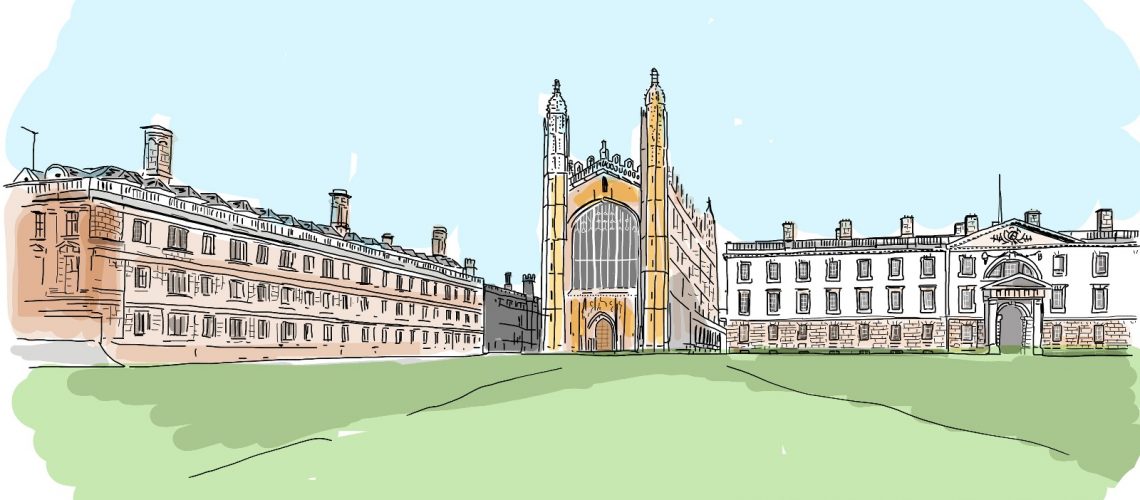The latest product from Cambridge Sound Technologies, the Sleep Infuser, was designed and developed in Cambridge, England. Cambridge Sound Technologies are at the forefront of innovation in their field and they are by no means the only tech company to flourish in the Cambridge area. Some 5,000 technology companies have been founded there in the last 60 years, prompting the media to dub it as ‘the Cambridge Phenomenon’. So how has this intense concentration of tech companies grown up around this one especially English city?
If we were to trace the history of Cambridge in terms of technology and innovation, we could look as far back as the sixteenth century, to the founding of the University Press by Henry VIII in 1534. By the nineteenth century, as science and industry were experiencing the great rush of innovation of the industrial revolution, Cambridge native Horace Darwin (son of Charles Darwin) was founding the Cambridge Scientific Instrument Company. It is clear that Cambridge has been at the forefront of scientific endeavour for hundreds of years.
Today, some of the world’s leading technology companies can be found in Cambridge. These include Arm Holdings – a company that designs chips for nearly all smartphones, Frontier Developments – one of the world’s leading computer games developers, and Abcam – a leading life sciences company. Cambridge is not only home to these large, well-known companies, it has been the starting point for many a smaller company to develop and grow. What then, is the secret of the Cambridge Phenomenon?
It would be easy to point to Cambridge’s world-class university as the source of its success in innovation and this certainly can’t be discounted. After all. so much scientific talent coming together in one place is bound to result in an explosion of ideas. But it was not until the university decided to change its policy that the entrepreneurial energy of its scientists was unleashed. When academics from the university were allowed to pursue outside commercial opportunities, innovation suddenly became alive in Cambridge. This also had a longer-term effect on students at the university, who were now being taught by industry leaders such as Andy Hopper of Acorn Computers and Greg Winter of Cambridge Antibody Technology.
Another factor in Cambridge’s success is its ability to evolve and change with the times. This isn’t immediately obvious when you consider the ancient streets, buildings and host of traditions associated with the city, but don’t be fooled by outward appearances. Although most tech companies in Cambridge are now housed in purpose-built accommodation, back in the 60s and 70s when the tech explosion began, it was not uncommon to find a hive of technical activity hidden behind the exterior of an ancient building. Indeed, Cambridge’s commitment to growth can be seen in their attitude to town planning to this day.
Infrastructure alone, although vital, does not account for the Cambridge Phenomenon. There is a spirit of collaboration and knowledge-sharing that makes innovation possible. One example of this spirit in action is Cambridge Angels, a group of local entrepreneurs who offer finance and support for young start-ups. After ten years, they have been successful to the degree that a second group has had to be started.
Along with this winning combination of academic excellence, local support and infrastructure, one other vital element is needed – the innovators themselves. Successful innovators choose Cambridge to further their work because of its aforementioned advantages and also because by choosing to stay, they perpetuate the success of Cambridge’s tech industry. Success breeds success and the more world-changing technology that comes out of Cambridge, the more entrepreneurs see the opportunities of setting up there.
This can be observed, not only in the number of world-leading technology companies who have their base in Cambridge, but in the number who remain there after being taken over. Medimmune, Broadcom, and HP, were all purchased by overseas companies and have remained in Cambridge. Others like Toshiba and Microsoft, keep a research and development presence in the city.
Of the 5,000 tech companies founded in Cambridge, around 1,400 remain there today. Between them, they make a significant contribution to the economy, both locally and nationally and employ around 40,000 people. The ideas that have come out of Cambridge have changed the lives of people around the world. Horizon Discovery, for example, pioneered the idea of testing the effect of cancer drugs in a test tube – the x-man cell lines. Heart surgery was pioneered in Cambridge, as were inhalers. Technologies such as the ARM chip also came out of Cambridge.
Can this hub of innovative technology continue? Certainly, Cambridge’s ability to nurture talent and adapt to an ever-changing world has been evident across the centuries. The combination of academic success, infrastructure and supportive culture assure future growth. Add to that the very fact that their continued success will be built upon and it’s easy to see the Cambridge Phenomenon stretching far into the future.

